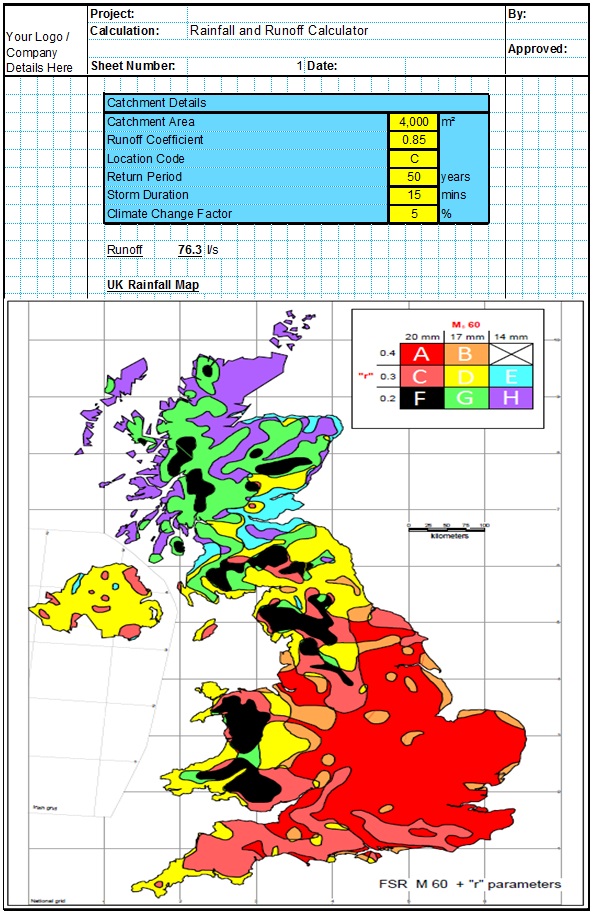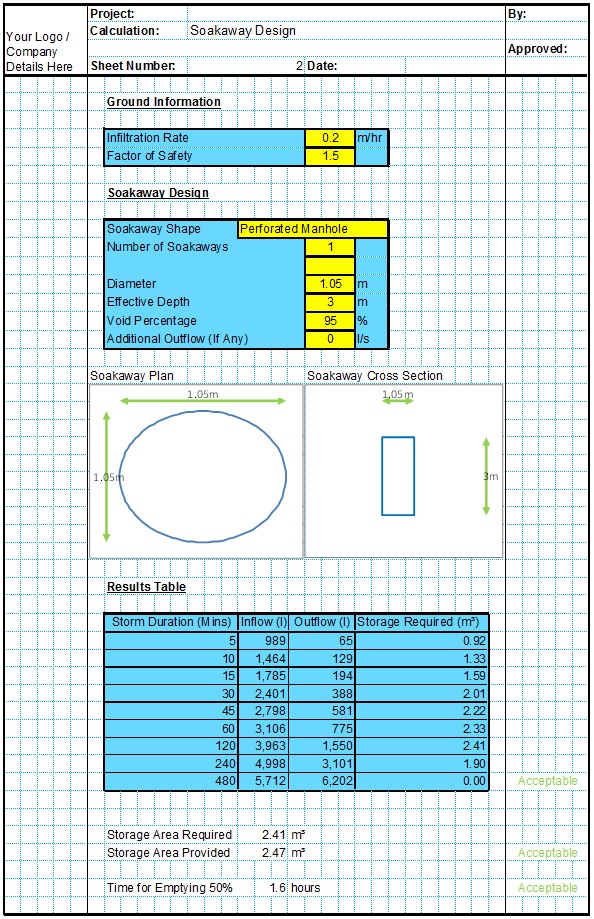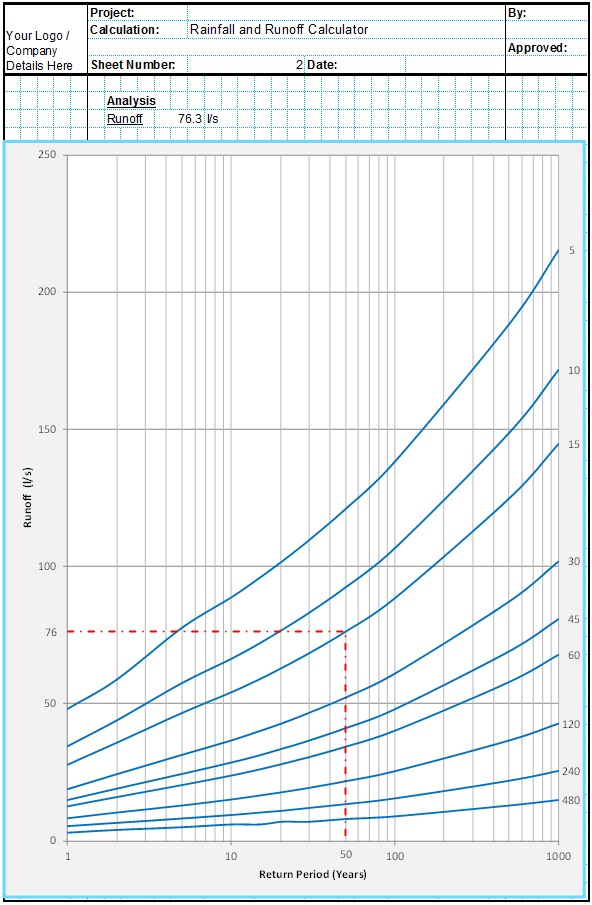For small developments up to around 200 hectares, BS EN 16933-2 allows the use of the simple rational method to evaluate the runoff for drainage design. This is the simplest of the commonly used runoff calculation methods and only suitable for simple or non-critical applications.
This simple formula has been used all over the world since the 19th century as a quick and simple method for evaluating runoff. For major catchments and developments the rational formula has been superseded by other more complex and accurate methodologies such as the Wallingford modified rational method, but for preliminary or small scale drainage design it can still be useful.
Rational Method Calculation
The rational method formula consists simply of estimating the catchment area and the maximum rainfall intensity the system is required to handle, then multiplying by the rational method Runoff Coefficient and the Climate Change Allowance coefficient. Further details on the rational method runoff coefficient and a table of typical runoff coefficient values are provided here.
Applications
The Rainfall Intensity can simply be taken as 0.014l/s/m² (50mm/hr) for small paved areas of up to 4,000m² according to BS EN 16933-2. This value corresponds roughly to a design storm of 5 minutes duration and a return period of 1 year. In this case ponding will occur for a few minutes after a heavy storm, which is acceptable for most small roads or car parks.
For small developments up to around 200ha historically derived constant rate rainfall intensities can be estimated for different return periods anywhere in the UK using the maps in BS EN 16933-2. These maps are reproduced in the Ultimate User Guide which is provided free with the CivilWeb Rainfall & Runoff Calculator spreadsheet.
The same methods can be used for catchments with a time of concentration less than 15 minutes, Time of concentration can be calculated using the Kirpich formula which is included with the CivilWeb Time of Concentration calculator spreadsheet. This is provided free with any purchase of the CivilWeb Rainfall & Runoff Calculator spreadsheet.
The CivilWeb Rainfall & Runoff Calculator suite includes a rational method excel spreadsheet which can be used to quickly complete the required stormwater runoff calculations. The spreadsheet plus the User Guide allows the user to design simple and accurate runoff calculations for any location in the UK for a number of common return periods.
Related Spreadsheets from CivilWeb;
Runoff Calculator Spreadsheet
This spreadsheet calculates the design runoff flow for a site in accordance with the a number of different methods including the Wallingford Procedure.
Attenuation Design Spreadsheet
This spreadsheet calculates the requirements for a attenuation system and assists the user to design a suitable system.
Soakaway Design Spreadsheet
This spreadsheet calculates the requirements for a soakaway system and assists the user to design a suitable system.
Full Drainage Design Suite
Full drainage design suite (50% Discount) including 7 spreadsheets;
- Colebrook White Pipe Design
- Manning Pipe Design
- Manning Open Channel Design
- Linear Drainage Design
- Runoff Calculator
- Attenuation Design
- Soakaway Design



